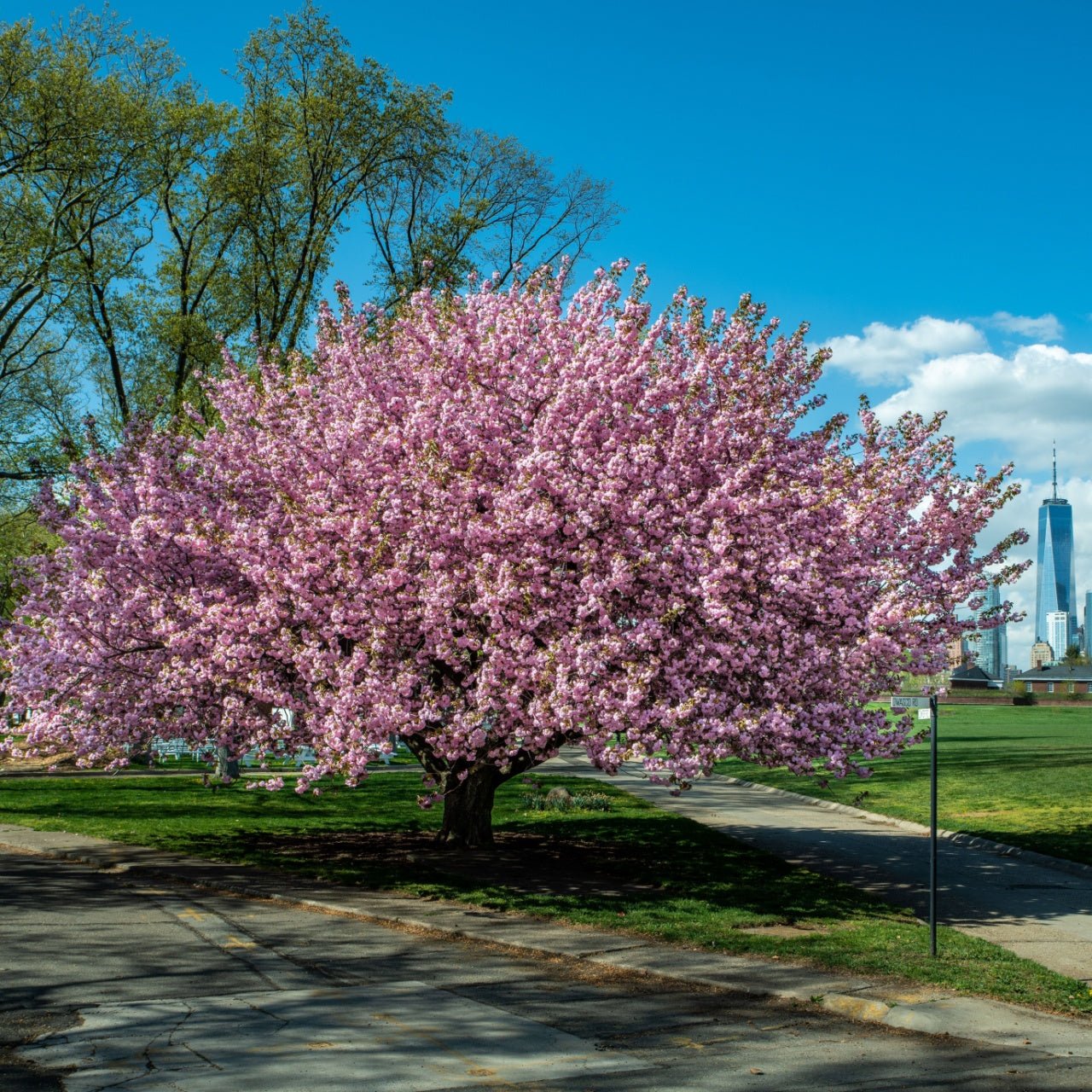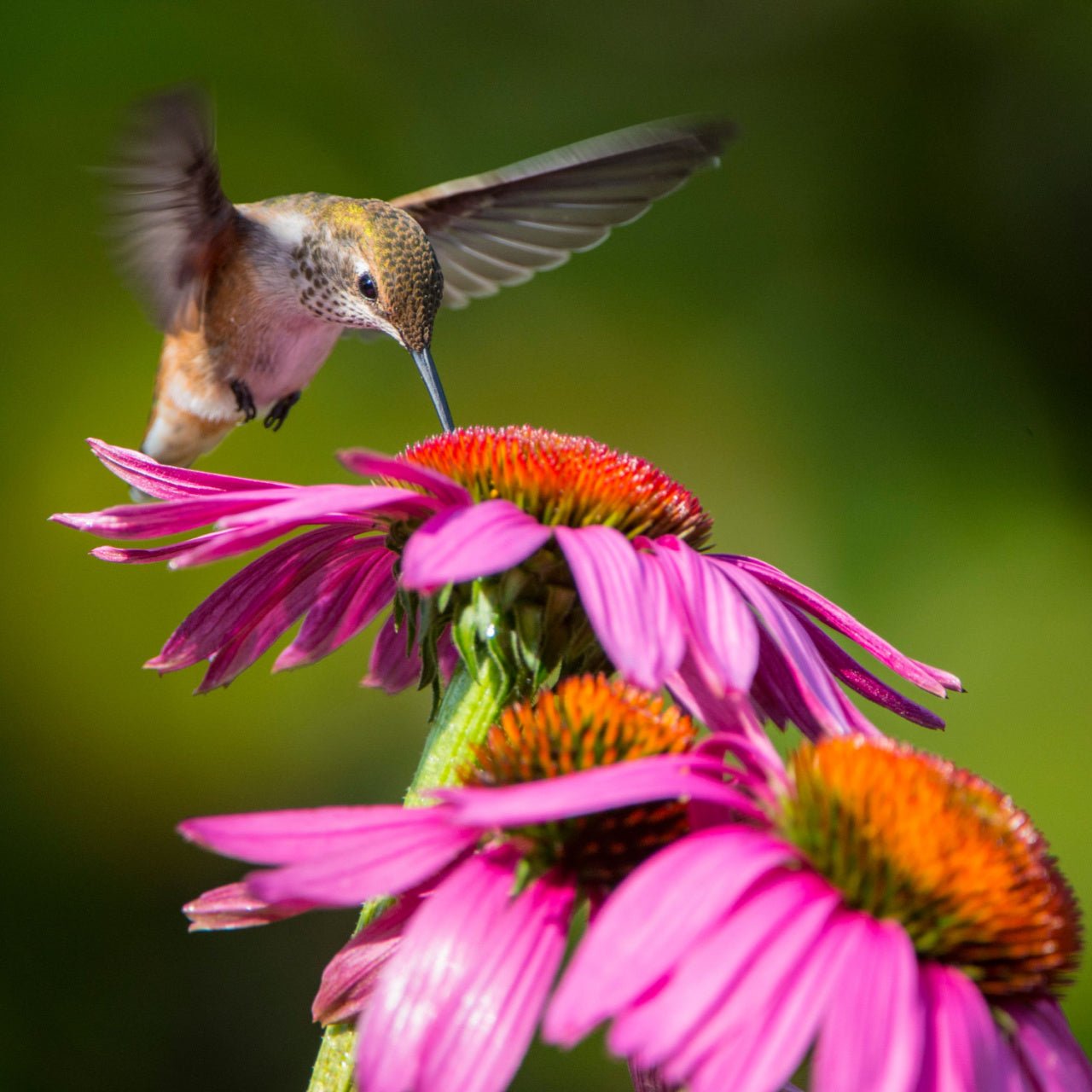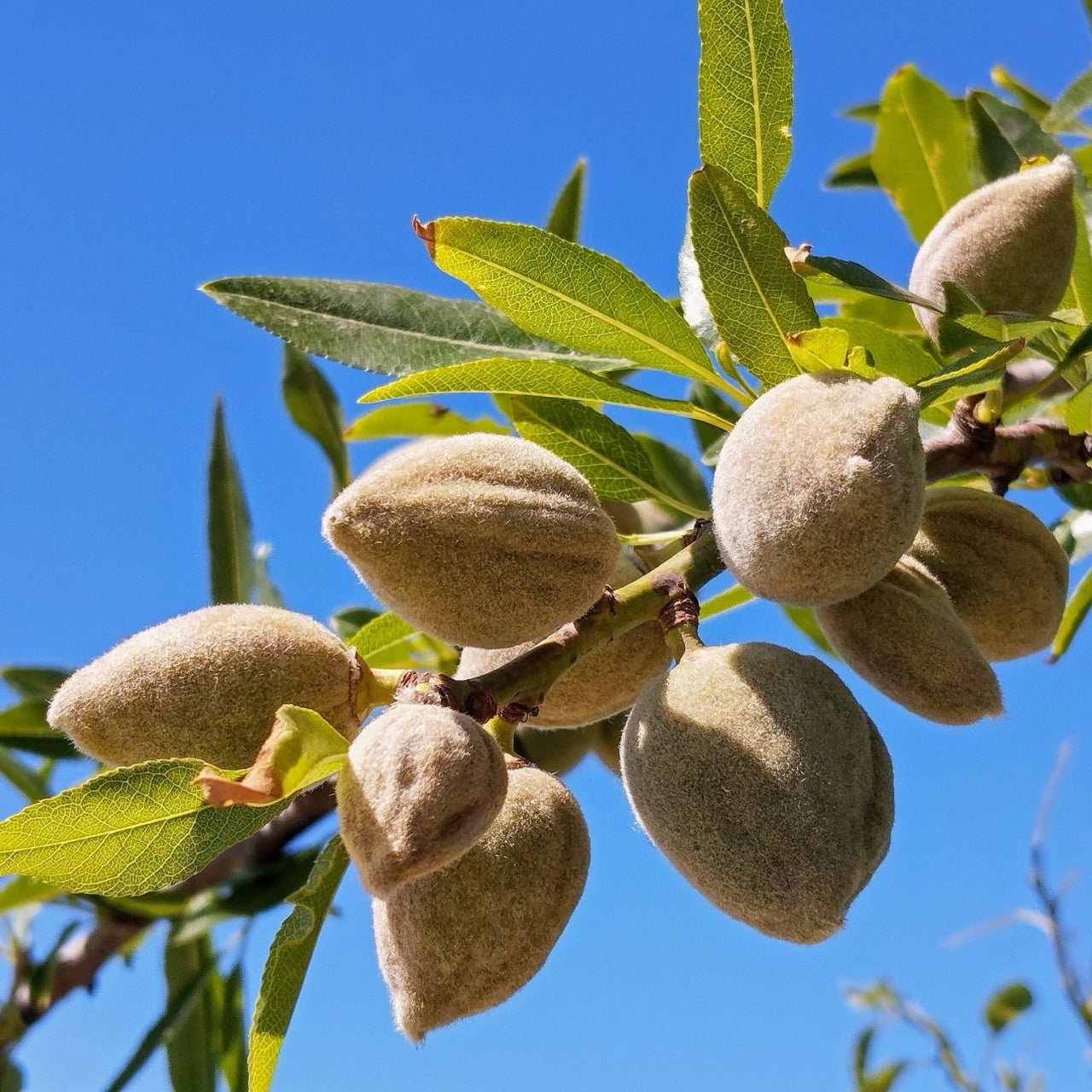
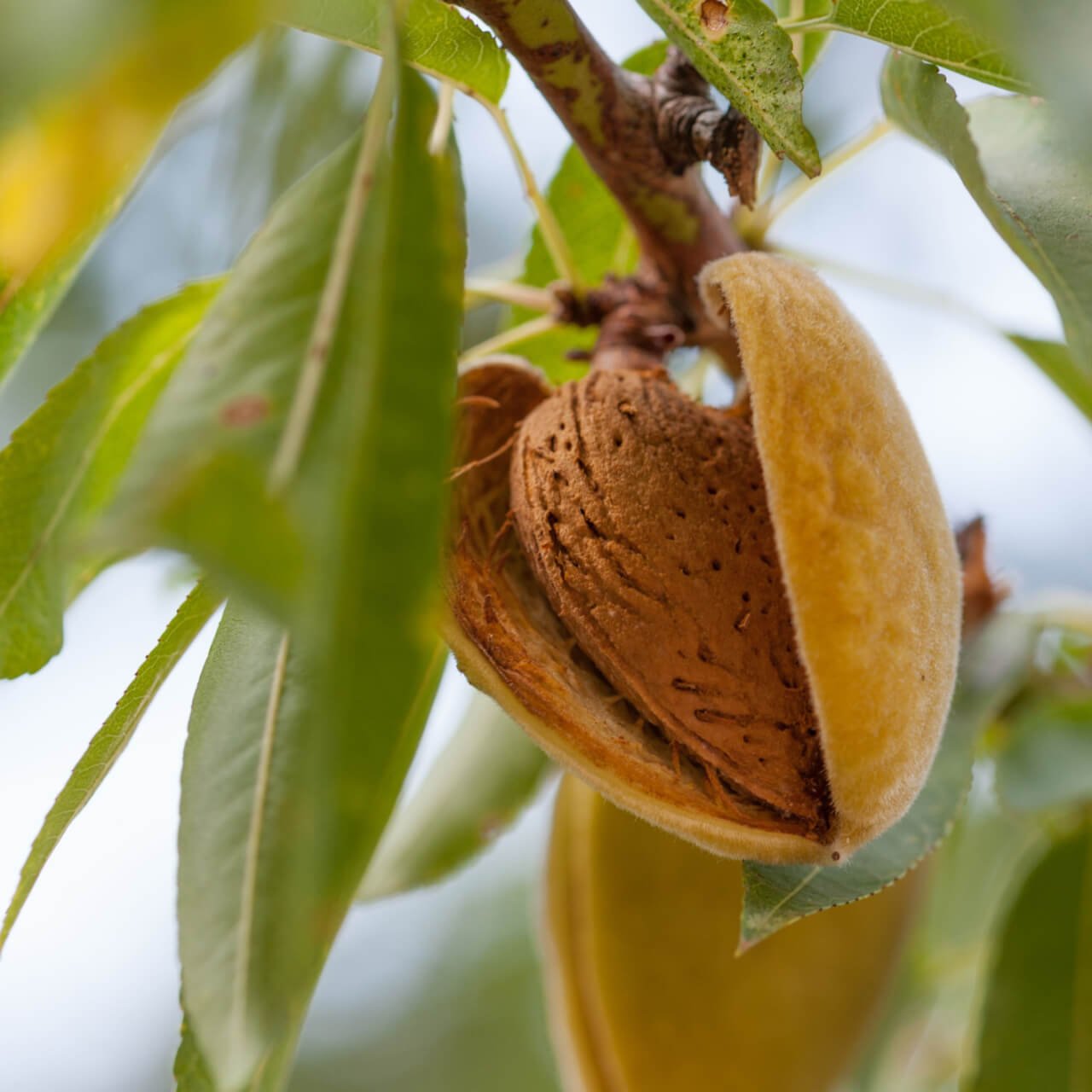

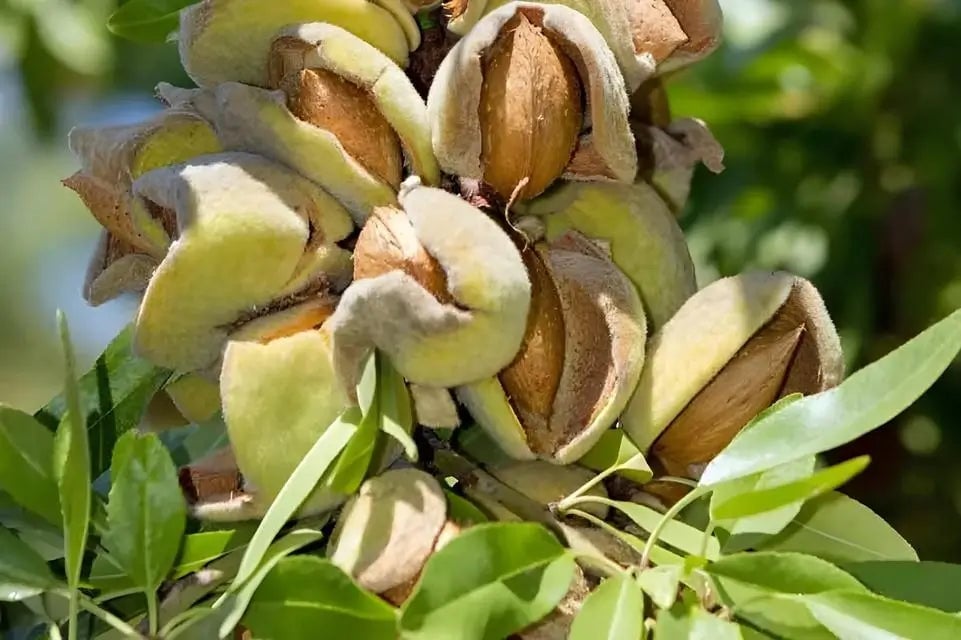

Hall's Hardy Almond Tree
Attracts bees and pollinators
Beautiful, fragrant spring blooms
Drought-tolerant once established
Thrives in
ZONE 5ZONE 6ZONE 7ZONE 8ZONE 9ZONE 10This plant ships:
Spring 20261 Year Guarantee on all plants
Hall's Hardy Almond Tree - Prunus dulcis
The Hall's Hardy Almond Tree is an ancient tree. It is one of the earliest domesticated fruit trees, and is rarely found wild in its original setting. There is even archaeological evidence of domesticated almond trees found from the early bronze age in the middle east – so this tree truly has been feeding us for centuries. It is in the peach family, and has blooms similar to that of the cherry. Its fluffy, light pink flowers grace the branches in spring, filling the air with their sweet fragrance.
Plant Details - Hall's Hardy Almond Tree
Family: Rosaceae
Light Requirement: Full sun
Water Needs: Moderate
Height: 10-15 ft
Spread: 10-20 ft
Growth Rate: Moderate, Fast
Soil Preference: Fertile, Well draining
Season of Interest: Spring
Flower Color: Light Pink, White
Fruit: Drupes (Almonds)
Wildlife Value: Birds, Small mammals, Bees, Butterflies
Notable Characteristics - Hall's Hardy Almond Tree
The Hall's Hardy Almond Tree is a beautiful and unique tree. It bears fruit that has no flesh but is considered a drupe, as it has a stone “pit”. Where the flesh is on a peach or plum is instead a soft, woody exterior which dries out as the season continues. As it dries, it breaks open to reveal the almond in its shell which can then be broken open. Therefore, almonds are not actually considered a nut, they are actually a drupe. The tree itself has woody, medium sized branches in a warm brown. The leaves are long and oval shaped with pointed tips, and are a glossy, bright green. The flowers are white or very light pink, somewhat resembling cherry blossoms, and are beautifully fragrant.
Landscape and Maintenance
This glorious tree is native to the Mediterranean because it thrives in warm, dry summers and mild, wet winters. Currently, California is responsible for growing 80% of the world's almonds, but the trees require a high amount of acreage and water to thrive. Given the increase in drought and temperature due to climate change, almond trees are likely to be on the decline. The Hall's Hardy Almond Tree provides early season nectar to hungry pollinators like bees and butterflies, and the almonds that drop as its husk dries out provides food for birds and small mammals. This fragrant, showy tree is an absolute gem to grow in your yard.
This Is How Your Plants Will Look upon Delivery

Bloom Season
Spring
Bloom/Foliage Color
White
Height at Maturity
Under 25 Feet
Care
Almond Tree needs full sun, well-drained soil, and regular pruning.
Plant Reproduction
Almond Tree (Prunus dulcis) spreads primarily through seed dispersal.
Plant fruit trees in early spring or late fall when the weather is cool. Choose a sunny location with well-drained soil. Dig a hole twice the width of the roots and double as deep as the root system. When the tree is put in the hole, make sure the graft union (a noticeable bump where the tree was grafted above the rootstock) is above the soil line. Put dug-out soil around the tree roots, gently firmly remove air pockets, and water thoroughly.
Water young trees regularly, especially during dry spells, to establish a robust root system. Once established, water deeply and less frequently. Prune fruit trees yearly during the dormant season to remove dead or diseased wood, improve air circulation, and shape the tree for optimal fruit production. Fertilize in early spring and thin the fruit when necessary to prevent overbearing, which can stress the tree and reduce fruit quality.
Shipping date depends on the date displayed and chosen when you order from the product's page.
We only accept returns on plants verified dead. If you think your plants have died, we offer a 1 year warranty, please use this File a Claim Link to verify dead plants and start with return warranty process.






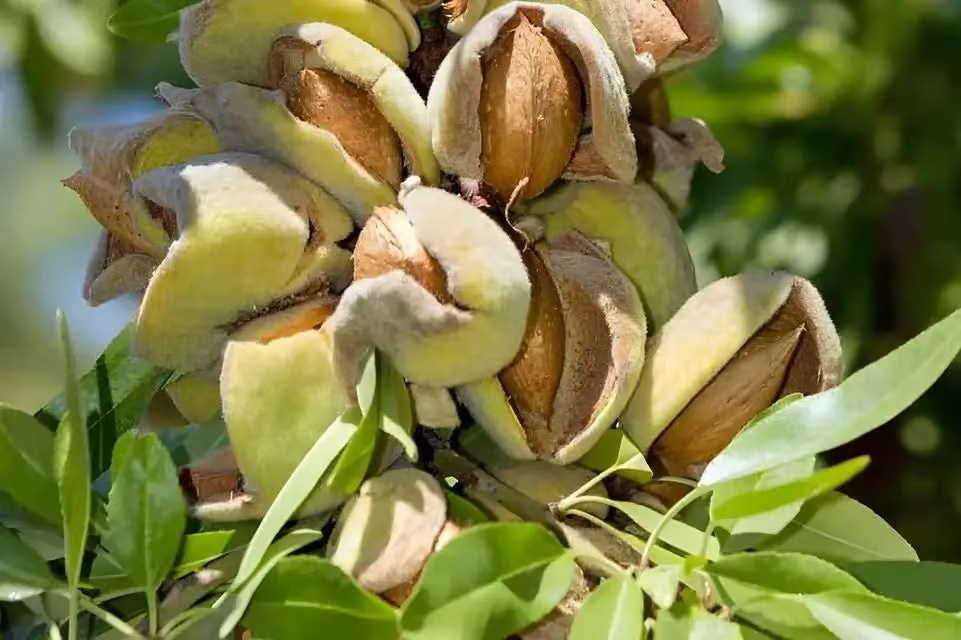
Nutritional Benefits:
Almonds are packed with vitamins, minerals, and healthy fats. Growing your own almond tree ensures a fresh supply of this nutritious superfood right in your backyard.
Self-Pollinating Variety:
Many almond tree varieties are self-pollinating, meaning you don’t need multiple trees to produce nuts. This makes them a practical option for smaller gardens or urban settings.
Beautiful Blossoms:
Almond trees are known for their stunning, delicate pink or white flowers that bloom in early spring. These blossoms add a touch of beauty and elegance to any garden.
Investment for the Future
An almond tree can provide you with nuts for many years. It’s a long-term investment that offers both aesthetic and practical benefits for your home.
Caring Tips
How do I care for my Hall's Hardy Almond Tree?
Each box contains detailed care instructions and information about your product. But here's the basics.
Care Tips
Almond Tree needs full sun, well-drained soil, and regular pruning.
Light Requirements
Water the Almond Tree regularly, especially during its first few years, to establish a deep root system. Trim in late winter to shape and remove dead wood. Fertilize in spring. Watch for pests and treat them as necessary.
Hardy Planting Zones
5 • 6 • 7 • 8 • 9 • 10
Header
Use this content to share information about your store and products.
Frequently Asked Questions
How often should I water my plants?
How do I know if my plant is getting too much or too little sunlight?
What should I do to prepare my plants for winter?
What are the signs that my plant needs fertilizing?
How can I prevent pests from damaging my plants?
How do I choose the right plant for my climate zone?





